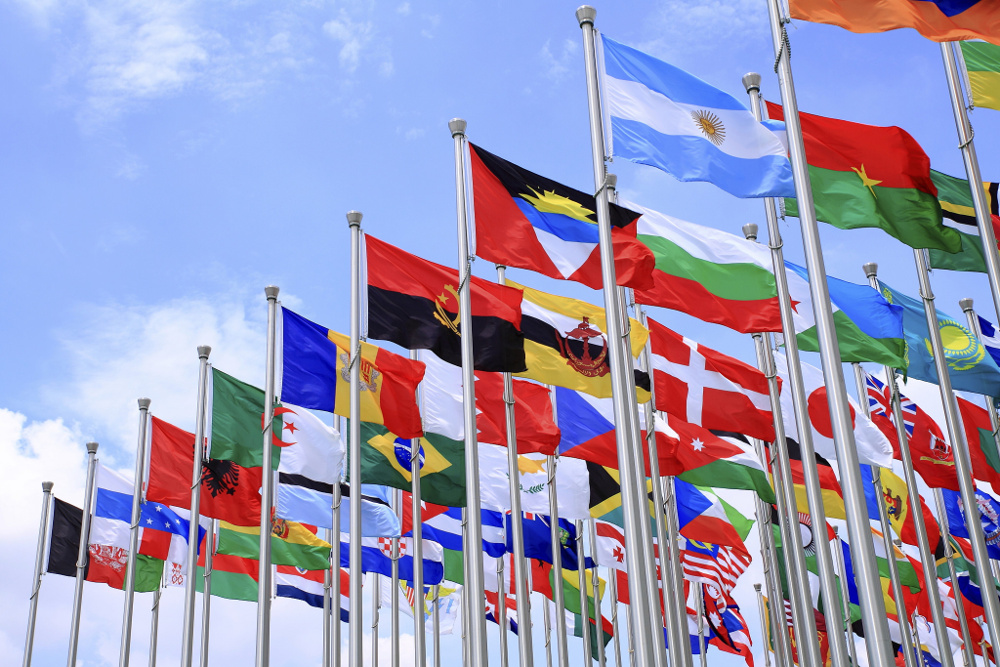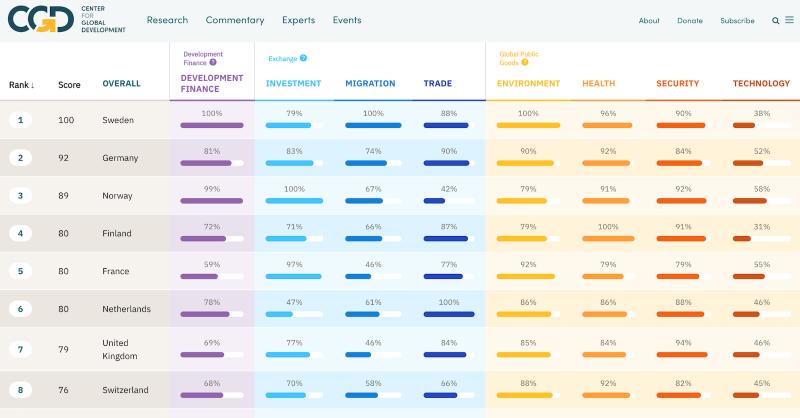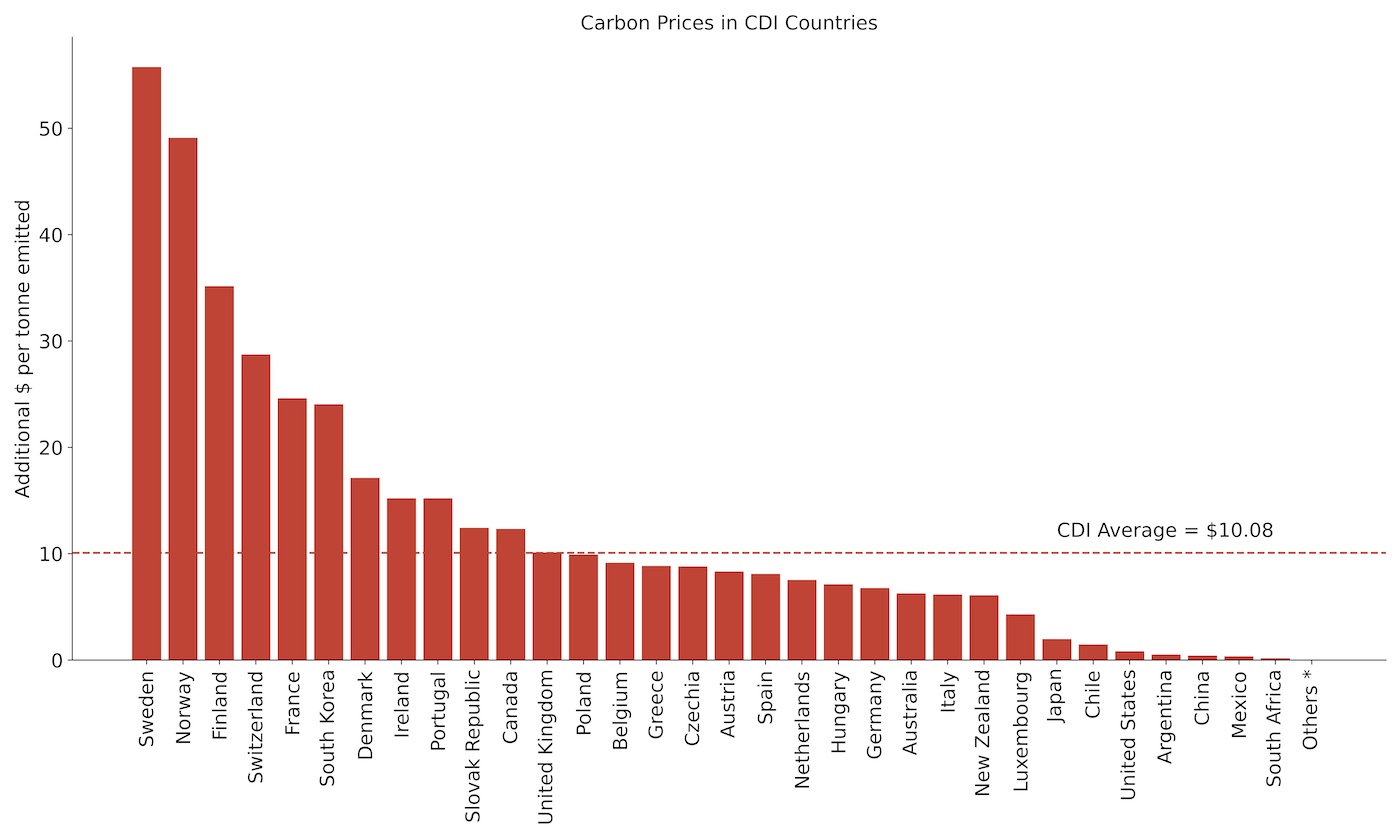Hello from London, where, at a Parliamentary building across the street from Big Ben, CGD today released the 2007 edition of the Commitment to Development Index. The event was organized by the U.K. Department for International Development, the All Parliamentary Group on Overseas Development, and the Overseas Development Institute. Each year the CDI ranks 21 rich countries on how much their policies help or hurt developing countries. The starting point is that rich and poor countries are connected in many ways--by aid, yes, but also by commerce, migration, the environment, military affairs, and technological developments. So simple comparisons of donors on how much aid they give as a share of gross domestic product miss the big picture, which is why the CDI assesses policies in seven major areas. The CDI web site offers a wealth of graphs, introductory material, country performance reports, and technical detail.Most of the policies in the CDI change slowly: think of trade and migrations policies, each deeply embedded in domestic politics. So it is not surprising that this year's standings look much like last year's. Once again, the Netherlands is first, Japan is last, and the United States ranks a bit below the middle. Over the last four years, though, we see some real changes. Spain's score has climbed the most, using the 2007 CDI methods and formulas, because of an aggressive policy to formalize illegal workers within its borders, which wins it points on migration. Denmark is among those who have slid most, as a conservative government has cut the (still-high) aid budget.The 2007 CDI site does feature two major innovations. First, you can now look inside the environment component without having to wade through the CDI spreadsheet or the full technical paper. I encourage you to explore this feature, which demystifies the component. Compare the 21 countries on gas taxes, or get a synopsis of Japan's performance accross all the environmental indicators. Please revisit the CDI site over the next few months to watch us introduce the feature for all the components.In addition, we tried adding Brazil, Russia, India, and China (which Goldman Sachs dubbed the BRICs) to the CDI environment component. The CDI never applied to developing countries before because it is about what the most fortunate are doing for the least fortunate. Not to mention the data problems: no one knows how much aid China gives. Yet people still often ask why China is not in the CDI. And in the United States a debate rages about whether rich countries should take the first steps to combat climate change on their own, or whether that would be pointless while China and India are furiously building coal-fired power plants. Most of the environmental data are available for the BRICs, so including them seemed worthwhile as a side exercise.Despite the Amazon deforestation in Brazil, the dominance of oil and gas in Russia's economy, and the industrialization of China and, to a lesser extent, India, the BRICs turn out to stack up well environmentally, coming second, fourth, fifth, and eleventh when mixed in with the CDI's mainstay 21 rich countries. Perhaps this is not surprising. On average, one American causes the same greenhouse gas emissions as four Chinese or nine Indians.The results convince me that rich countries must lead on combating climate change, or at least in bearing the costs. They are emitting disproportionately, even as poor countries are likely to suffer more of the harm (see reports on agriculture and sea level rise). Rich countries have more wealth and technological prowess to bring to bear on the problem of building a climate-friendly energy economy. True, developing countries, because they are building so many power plants today, may offer more opportunities for cost-effective emissions reduction. But who reduces the emissions is separate from who pays for the reductions. A global carbon permit trading system could allow developing countries to profit from switching away from coal now, by selling emissions rights they would no longer need to rich countries. (See the comments at this blog post.)At any rate, the BRICs' high environmental scores shouldn't get them off hook for global warming either. As my colleagues David Wheeler and Kevin Ummel show in a forthcoming CGD working paper, even if the rich countries had never existed--never emitted all that carbon--that would only rewind the global climate clock 30 years, so fast are developing countries' own emissions rising. So if rich countires must lead, then poorer ones will need to follow close behind.
CGD blog posts reflect the views of the authors, drawing on prior research and experience in their areas of expertise.
CGD is a nonpartisan, independent organization and does not take institutional positions.





